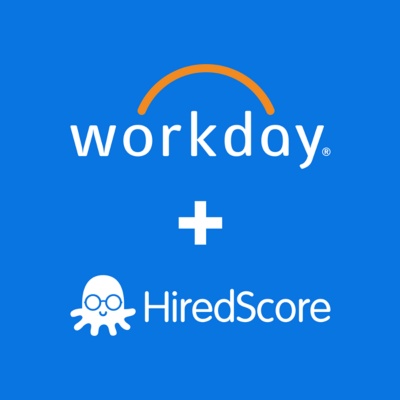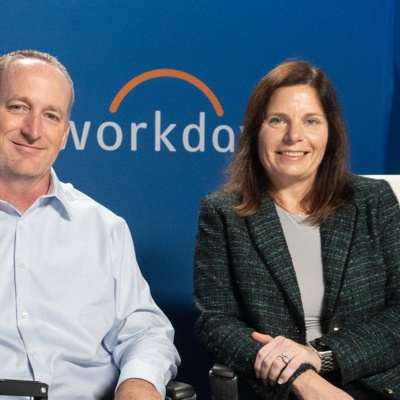
What’s Trending in the Grocery Industry
The next generation of grocers are constantly adapting to their customers’ needs. Value pricing, smart planning, and leveraging technologies such as AI are all key to an incredible consumer experience.
News, trends, and insights for HR leaders, HR professionals, and hiring managers.

The next generation of grocers are constantly adapting to their customers’ needs. Value pricing, smart planning, and leveraging technologies such as AI are all key to an incredible consumer experience.

From tight staffing levels to the public’s expectations for digital experiences, government agencies are dealing with a lot. That’s why they’re embracing new technologies and approaches, such as AI for productivity improvements and skills-based talent management.

Transformative trends promise to impact higher education over the next few years. From AI and digital experiences to the power of data, here’s how higher ed leaders can prepare now for what’s next.

Students on average lose 43% of their credits upon transferring from one institution to another. Learn how higher education leaders can make the credit process more transparent, efficient, and clear so students can more easily complete their degrees.

Accelerate with Workday makes it easier than ever for companies to get started and see results with Workday—realizing 42% faster time to value. Learn how this new program helps keep organizations moving forever forward.

Metrics from Workday customers indicate the hiring slowdown may be coming to an end. We explore how that impacts organizations’ talent strategies and why that makes “retaining” the new “recruiting.”

The acquisition solidifies Workday as a leader in providing an end-to-end, AI-powered talent acquisition and mobility solution, helping HR leaders meet today’s evolving hiring and talent landscape. Learn more from the company’s founder and CEO—and now GM of HiredScore at Workday.

Broaden your understanding of the contingent workforce management technology maturity model—and identify where your company fits within this framework—to help build a business case for a VMS.

Focus areas for leaders in the tech, media, and entertainment industries include upleveling their forecasting and planning capabilities, and using data-driven insights to gain a competitive advantage and meet consumer demand.

More than 80% of nonprofits cite a lack of adequate technology as a barrier to gathering information on mission impact. In a new report, industry experts from CrossVue and Workday partnered to explain what this means for the future of the nonprofit industry.

Savvy hospitality leaders will invest not just in technology, but also in workforce reskilling and upskilling to leverage innovative capabilities and deliver customer-centric experiences.

The hospitality industry has faced wave after wave of difficulties in the past few years. Learn how restaurant chain P.F. Chang’s has risen above those challenges thanks to its innovative approach to talent and technology.

In this video, learn how insurance industry leaders can help their companies better compete by adopting technologies such as AI and partnering with Workday.

Retailers are using AI to meet evolving employee and customer expectations, and building out data capabilities to weather unexpected challenges and support future growth.

Members of the Workday channel management team discuss the best practices for working with managed service providers (MSPs) and the benefits of partnering with the right MSP for your business.

What’s the positive path forward for the retail and hospitality industries? Keith Pickens, managing director of retail and hospitality at Workday, shares his perspective in this installment of our Industrious podcast series.

To get the best out of resource management, firms need to reimagine how they use technology and empower their teams. Shalu Manan, global talent supply chain leader at Genpact, a professional services firm, shares her approach.

In this episode of our Industrious podcast series, it’s all about challenges and opportunities for the tech and media industries, featuring special guest Randy Rasmussen, Workday managing director for tech and media.

Augmented workforces aren’t just changing the future of work, they’re shaping the here and now. Learn how your company can benefit by integrating artificial intelligence.

Our global payroll strategy combines Workday technology with an expansive partner ecosystem to provide customers with the solutions that best support their evolving needs.

Closing the talent gap is a persistent issue for organizations, exacerbated by rapid technological advancements. Addressing it requires a flexible talent strategy that includes utilizing the contingent workforce and promoting internal talent mobility.

Joan Garry, a nationally recognized nonprofit leadership expert, best-selling author, and founder of the Nonprofit Leadership Lab, explores some of the challenges and opportunities facing nonprofit leaders in 2024 and beyond.

Payroll has the potential to provide valuable insights for strategic decision-making, creating a big impact on business outcomes and significantly influencing the success of an organization.

Our global survey of 2,600 executives indicates that diversity, equity, and inclusion efforts remain a priority, with many increasing budgets and better utilizing AI and other technologies to achieve DEI goals.

Explore the standout insights, trends, and technological innovations from NRF 2024: Retail’s Big Show. Hear stories from Workday customers on how they’re reimagining the future of retail and delivering extraordinary customer experiences.

An SME is a company that has employees, revenue, and assets below a set threshold, but defining that threshold can be difficult. Discover how different regions define an SME, and how your small or medium-sized company can play to its strengths.

Hear what we learned at NRF 2024: Retail’s Big Show in this special edition of the Workday Podcast, including an interview with Workday retail expert Jen Johnson.

Workday is committed to prioritizing data privacy and responsible AI to create technology that our customers can trust. Discover how our chief privacy officer, vice president of public policy, and chief responsible AI officer work together to advance responsible innovation.

The insurance industry is facing a steep talent shortage. One way industry leaders can shore up a growing skills gap? By leveraging AI and machine learning (ML) to power automation and deliver insights to evolve workforces.

As the external workforce in the financial services sector grows, the need for technology to manage contingent workers grows with it.

As the workplace continues to change, organizations must use AI and data to develop a skills-based workforce for long-term success. Workday’s Jim Stratton and Accenture’s Penelope Prett explore the challenges of managing skills, the need for a new approach, and the role of AI in reshaping the workforce.

External workers are an essential part of any workforce, but in the financial services industry, they have become the solution to many labor struggles.

Empower your team to benefit from AI by understanding their perspective. A commissioned study conducted by Forrester Consulting on behalf of Workday, “A Human-Centered Approach to Al in the Workplace,” shares more.

It’s our privilege to honor financial services customers who are driving transformation and reimagining how their future works. Read on to learn this year’s category winners for the Workday Industry Innovation Awards.

Maryjo Charbonnier, CHRO at Kyndryl, joins guest host Megan Wright, head of innovation at FT Longitude, to discuss the critical role that HR leaders will play in their organization’s AI adoption success.

HR leaders are aware of AI’s strategic value—and cautious of its risks. A report from Workday and FT Longitude sheds light on what HR leaders think about AI and how they can effectively embrace it.

Discover how change impacts the manager experience, why perceptions are more positive among senior leaders, and where organizations need to focus their attention in 2024.

Our customers are leveraging Workday AI to understand the skills within their workforce—and connect those insights to skills that fuel their business strategies. Learn more from Workday Chief Customer Officer Sheri Rhodes.

Artificial intelligence and machine learning can transform employee data into a talent advantage. They help organizations use strategy rather than luck or hope to find the right hires—and develop a stronger workforce.

Bringing together HR expertise, technology, and the contingent workforce provides massive benefits to enterprises around the world. Learn how and why in this podcast with Sapient Insights Group.

A skills-based hiring strategy is critical to building an agile workforce. Here’s more on how to sustain the value of skills-based hiring throughout an organization’s talent strategy.

Labor costs are on the rise, which makes having the right workforce management software an imperative. Learn how taking a modern approach to employee scheduling, operational processes, and risk management can reduce business costs.

In the second installment of the Q&AI video series, Sayan Chakraborty, co-president of Workday, explains how artificial intelligence is changing the world of HR.

Consumer expectations continue to rise in retail. How are retail leaders innovating to meet those expectations? Derrick Jenkins, a partner at Deloitte, shares his insights based on recent research on the consumer industry.

CHROs are looking for opportunities to embrace generative AI for efficiency, process improvement, and better decision-making. Two experts on generative AI discuss these opportunities on this episode of the Workday Podcast.

In most organizations, payroll holds some of the richest yet most underutilized data sets—which can be used to drive strategic outcomes. Pete A. Tiliakos, a principal analyst, advisor, and managing partner at 3Sixty Insights, explains how.

We continue to innovate to help our customers thrive.

As Workday continues to operationalize the contingent workforce around the world, we sat down with Kerry Kiley, the mastermind behind Workday’s global contingent workforce program, to talk enablement and strategy.

To build the federal workforce of the future, agencies must first have a holistic understanding of their current skills gaps.

Hyoun Park, CEO and principal analyst at Amalgam Insights, explains why workforce management is not only about managing full-time employees but also supporting the extended workforce, including consultants, gig workers, and contract workers.